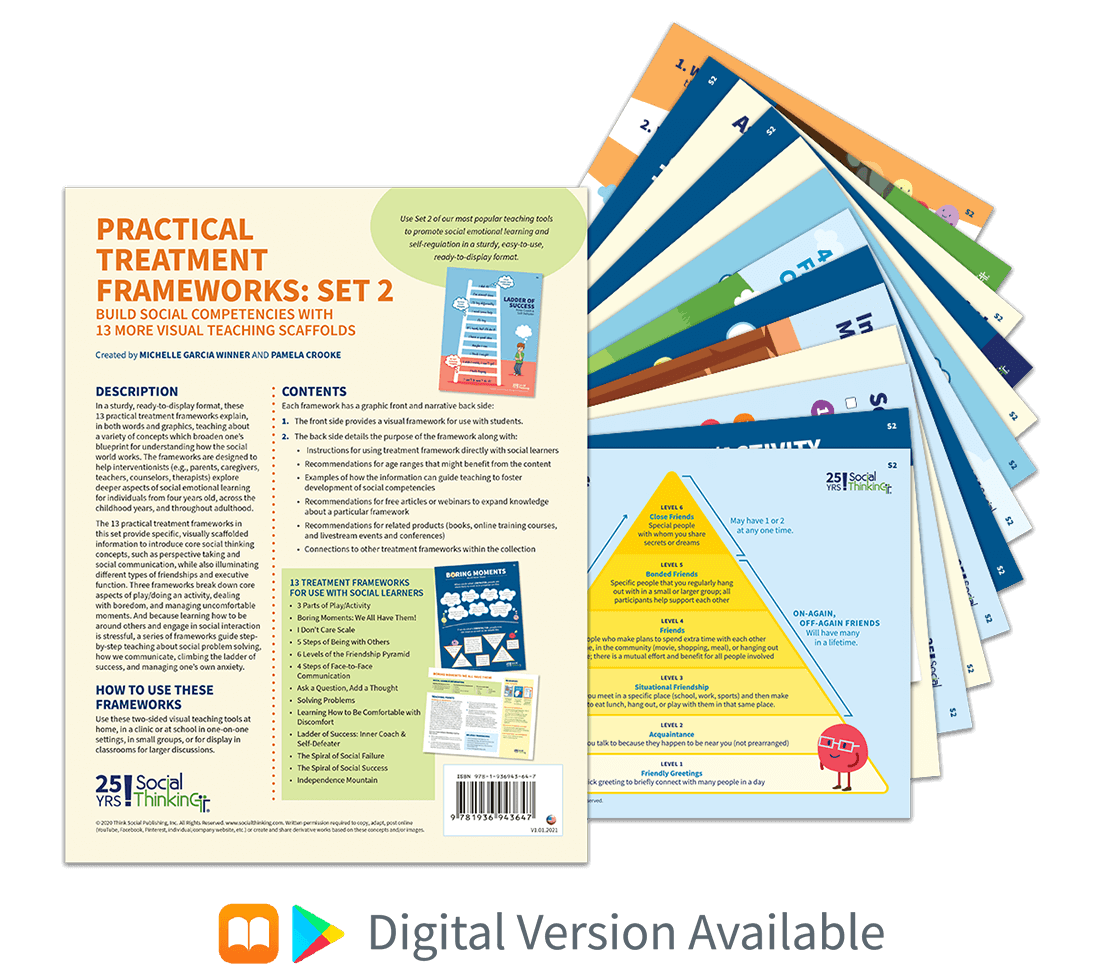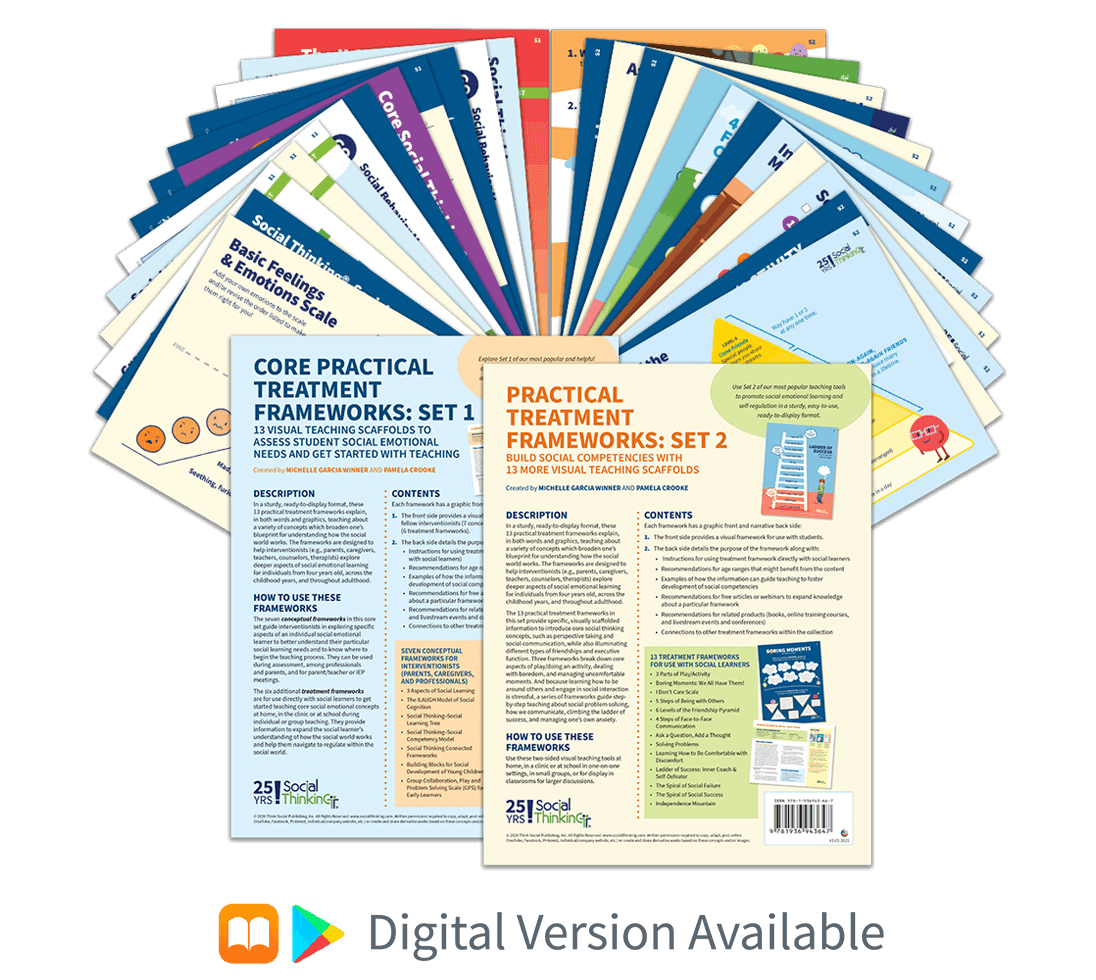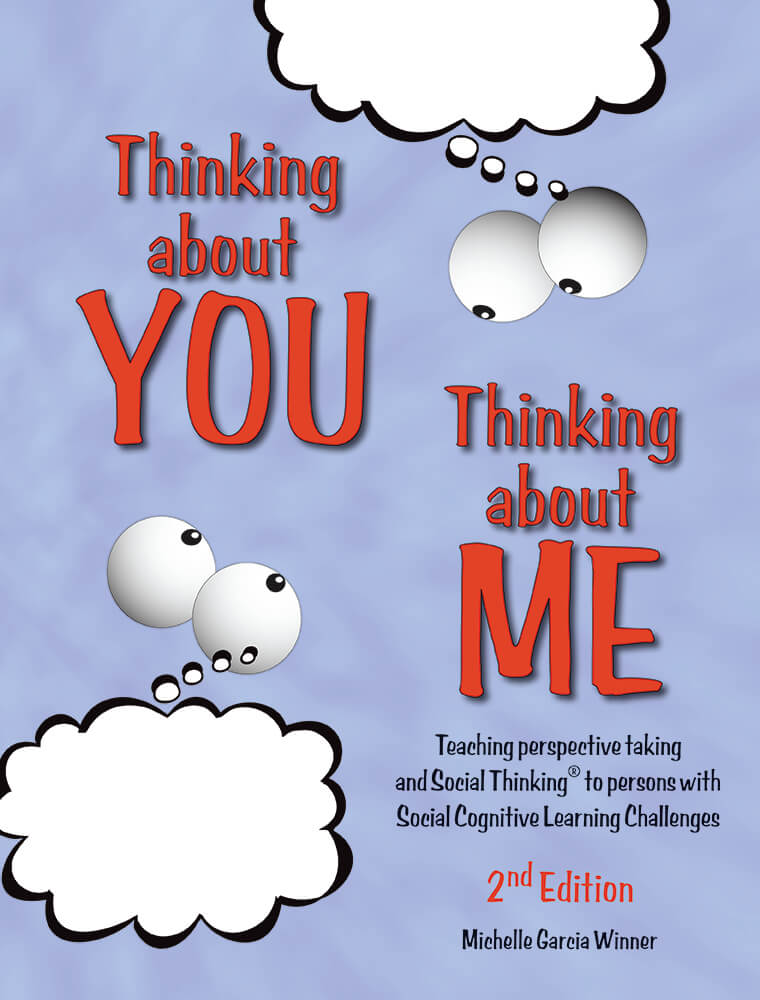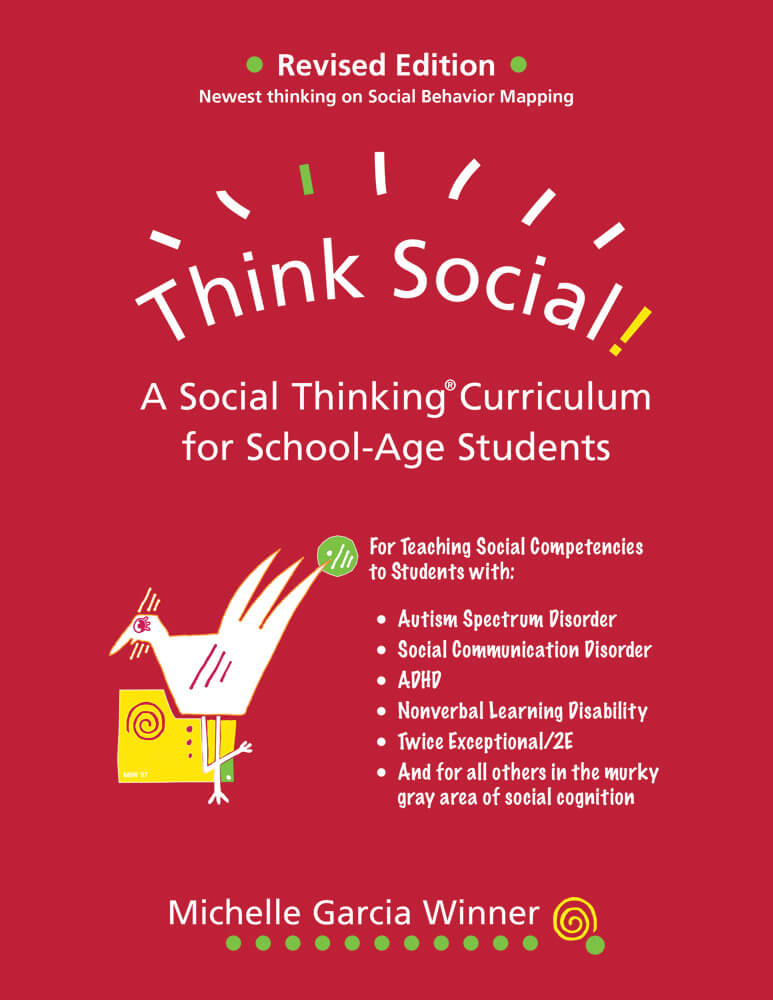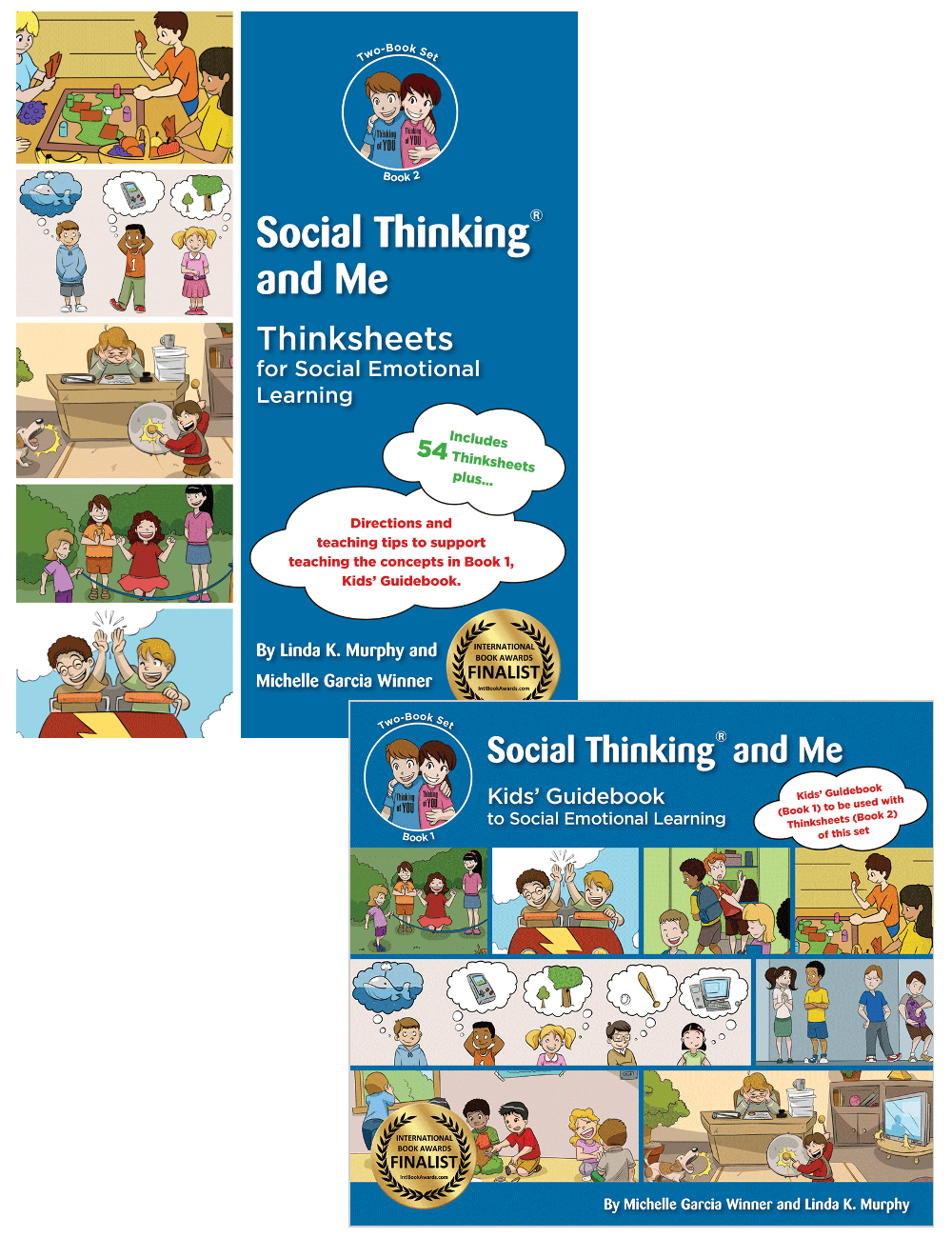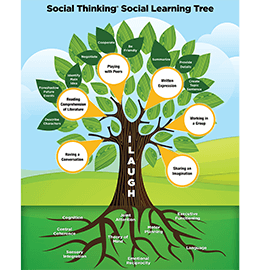Updated: August, 2022
© 2022 Think Social Publishing, Inc.
"People think that if something feels easy to do, the mechanisms behind it must be simple." -Cosmides
Amazingly, young children learn to coordinate their own body and mind, as well as interpret the words and actions of others to participate with increasing sophistication in the act of social communication. But this is not the case for everyone. Some students with social thinking needs may require support in learning what many of us take for granted: Social Communication.
Many years ago, a middle school client of mine asked, "How do all those kids at school magically pop into a group when the bell rings?" I was so intent on teaching her conversational strategies that I overlooked teaching an important aspect of communication: getting into a group. I stopped the group lesson, shoved the therapy table into the corner and, as a group, we started exploring the synergistic dance of mind, body, eyes, and language.
And every communicative act is a "social executive function" task. Simply put, executive function means "multi-tasking", and while many think of executive function skills as only referring to organizational tasks, our executive function skills are in strong demand during social communication. The take-home message is that communication is more than words. Let's move our students away from the therapy table and break down the abstract idea of communication into digestible parts: The 4 Steps of Face-to-Face Communication.
The 4 Steps of Face-to-Face Communication
We briefly review the 4 Steps of Face-to-Face Communication below (and available as a visual support in the Social Thinking Frameworks Collection Set). While these steps are broken down into individual steps, remember they form a synergistic whole. Interestingly, these four steps do unfold in this linear sequence, however, in milliseconds of time and often without conscious thought about them.
- Think about people: consider with whom you may want or need to communicate. We each do this step alongside all other steps of communication.
- What do you know about the people and how they may be feeling? Is this a good time to talk to them?
- Even if you are not friends with them, what do you know about them to help you figure out how to relate to them (e.g., you attend the same class, live in the same town, etc.)?
- Physical presence: be aware of your own and others’ nonverbal communication/body movements as people approach and start relating to each other.
- We communicate we want to be with a person or group when our feet, hips, shoulders, and head are facing toward that person, and we are standing about one arm’s length away. Shifts in our body may also indicate a desire to include others or need to end the interaction.
- Our body language, gestures, and facial expressions also convey information about how we each think and feel.
- Use of eyes: we use our eyes to monitor what communicative partners are attending to, their feelings and intention(s); we are also aware that our partner is likely tracking our visual attention, feelings, and intention(s). Note: this not referring to eye contact.
- The direction of other people’s eyes helps us interpret what they may be looking at and thinking about.
- We use our eyes to help figure out how people feel, who they may want to talk to, what they plan to do next, etc.
- Use language to relate: we use language to relate to others in the same way others use language to relate to us.
- Please refer to the Ask a Question, Add a Thought framework for further information about how we relate verbally.
You can also check out another important teaching concept in our article: Social Perspective Taking & The 5 Steps of Being with Others.










